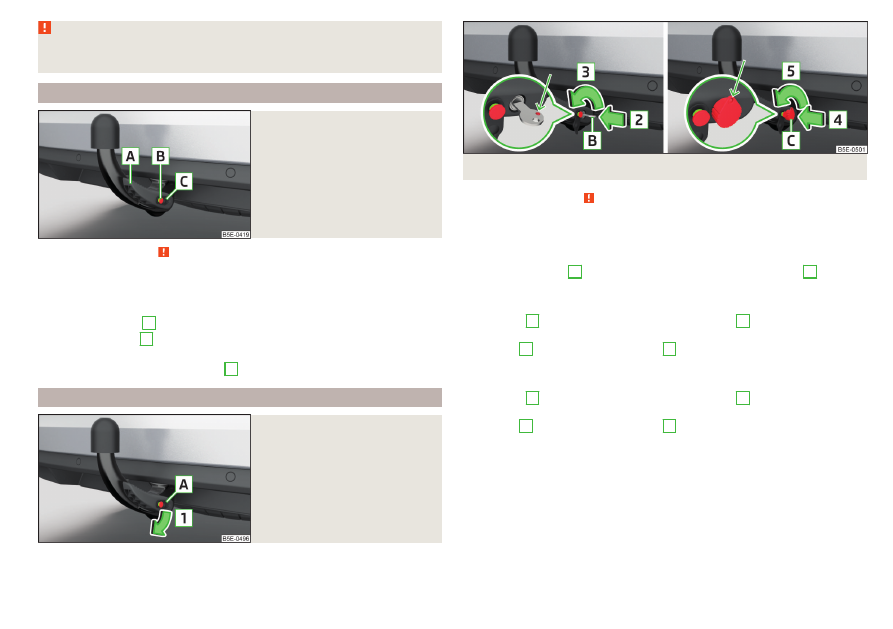Skoda Octavia (2019 year). Manual - part 16

WARNING
After fitting the tow bar, always secure the lock and remove the key. The
tow bar must not be operated with the key inserted.
Check proper fitting
Fig. 304
Correctly secured ball rod
Read and observe on page 250 first.
Correctly secured ball rod
The tow bar must sit securely in the receiving shaft. There must be no play
when “shaken” roughly.
Operating lever
A
is as far up as possible.
The release pin
B
is completely exposed (both its red and green parts are
visible).
The key is removed and the cap
C
attached to the lock.
Removing the bar ball – Step 1
Fig. 305
Remove the cap from the lock
Fig. 306 Unlock lock: Key version 1 / key version 2
Read and observe on page 250 first.
No trailer or other accessory is connected to the tow bar. We recommend
putting the protective cover onto the ball head before removing the tow bar.
Applies to both key versions
›
Remove the cover
A
from the lock in the direction of the arrow
1
Applies to key version 1
›
Insert key
B
into the lock in the direction of arrow
2
so that the green
marking is pointing upwards.
›
Turn key
B
in the direction of arrow
3
so that the red marking is pointing
upwards
.
Applies to key version 2
›
Insert key
C
into the lock in the direction of arrow
4
so that the eye of the
key is pointing downwards.
›
Turn key
C
in the direction of arrow
5
so that the eye of the key is pointing
upwards
.
253
Towing device and trailer